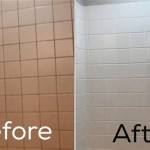Tile flooring is a popular choice among homeowners for its durability, ease of cleaning, and timeless aesthetic. But what if you could get the look of tile without the cost and upkeep? Imitation tile flooring is a great way to get the same look for a fraction of the cost and maintenance. Let’s take a closer look at the benefits and drawbacks of imitation tile flooring.
Imitation tile flooring is available in a variety of materials, including vinyl, linoleum, and laminate. Vinyl and linoleum are the most popular and cost-effective options, while laminate is slightly more expensive but offers a more realistic tile look. All types of imitation tile are available in a wide range of colors, styles, and textures, so you can achieve the exact look you want.
One of the biggest benefits of imitation tile flooring is that it is much easier to install than traditional tile. Vinyl, linoleum, and laminate are all available in large sheets, which makes them much easier to install than individual tiles. Plus, they don’t require grout or any special sealants, which can save you time and money. In addition, the material is much softer and quieter underfoot than traditional tile.
The main drawback of imitation tile flooring is that it is not as durable as traditional tile. Vinyl and linoleum are prone to scratches and dents, while laminate can be scratched and damaged by heavy objects. In addition, imitation tile can fade or discolor over time, so it may not last as long as traditional tile. Finally, imitation tile can be difficult to repair if it is damaged.
Despite its drawbacks, imitation tile flooring can be a great option for those looking for the look of tile without the cost and maintenance. It is easy to install, less expensive than traditional tile, and comes in a variety of colors and styles. With proper care and maintenance, imitation tile flooring can provide a beautiful and long-lasting flooring solution.










Related Posts








